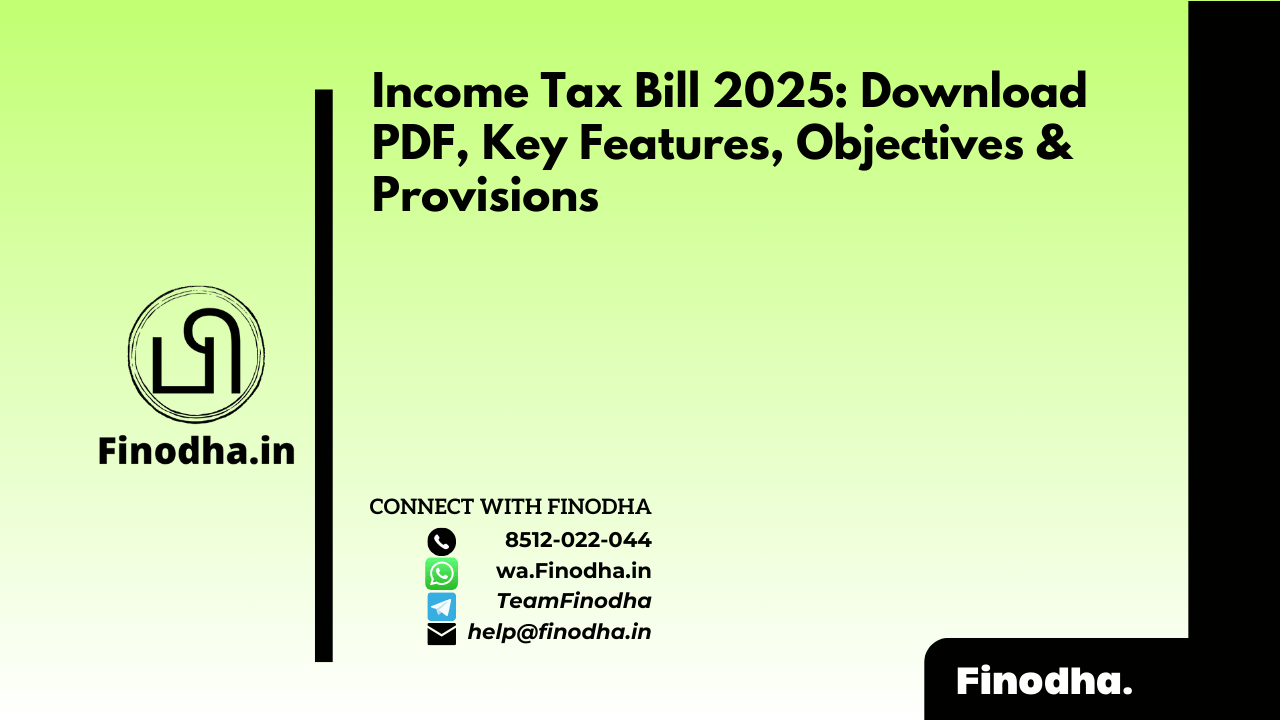Important Keyword: ETFs in India, Investment Benefits of ETFs, How ETFs Work.
Table of Contents

Introduction to ETFs
Exchange traded funds, commonly abbreviated as Exchange traded funds, represent a unique investment vehicle that blends the characteristics of both mutual funds and stocks. Typically traded on major stock exchanges, Exchange traded funds allow investors to buy and sell shares throughout the trading day at market prices, similar to how individual stocks are handled. This flexibility is one of the defining features that distinguishes Exchange traded funds from traditional mutual funds, which can only be purchased or sold at the market close.
At its core, Exchange traded funds is structured to track the performance of a specific index, commodity, or a basket of assets. When an investor purchases shares of an ETF, they are essentially investing in a diversified portfolio of securities that the ETF holds. This diversification can help in reducing risk compared to investing in individual stocks. A fundamental aspect of ETFs is their net asset value (NAV), which reflects the total assets of the fund minus any liabilities divided by the total number of shares outstanding. It is crucial for investors to be aware of the NAV, as it provides a transparent view of the fund’s performance and value.
Moreover, understanding the distinction between Exchange traded funds and other investment options like mutual funds is vital for prospective investors. While both can provide diversification, Exchange traded funds generally come with lower expense ratios and greater tax efficiency due to their unique structure. They can also be utilized for various strategies, including hedging and short selling, enhancing their appeal among a diverse range of investors. As we delve deeper into the workings and benefits of Exchange traded funds through this guide, it is essential to grasp these foundational concepts to navigate the evolving landscape of investment effectively.
How ETFs Function
Exchange-Traded Funds (ETFs) operate in a manner similar to mutual funds, yet they possess distinct characteristics that enhance their functionality and efficiency. At their core, Exchange traded funds are investment funds that hold a diversified portfolio of assets, such as stocks, bonds, or commodities, and are traded on stock exchanges. The price of an ETF fluctuates throughout the trading day based on supply and demand, akin to individual stocks. A crucial element that ensures Exchange traded funds trade close to their Net Asset Value (NAV) is the arbitrage mechanism, which involves the actions of authorized participants (APs).
Authorized participants are financial institutions with the ability to create and redeem ETF shares. When an ETF’s market price diverges significantly from its NAV, APs can exploit this discrepancy. If the ETF is trading at a premium (i.e., market price exceeds NAV), APs will sell shares in the open market and simultaneously acquire the underlying assets to create new ETF shares, thus increasing supply and driving the price down towards NAV. Conversely, when the ETF trades at a discount (market price below NAV), APs can buy ETF shares, redeem them for the underlying assets, and sell those assets in the market, reducing supply and elevating the ETF’s market price.
The roles of brokers and distributors further facilitate this process. Brokers execute the buying and selling of ETF shares on behalf of investors, while distributors typically manage the marketing and distribution of the Exchange traded funds to investors. This structure allows for seamless trading and ensures that ETFs maintain liquidity, making them an appealing investment option. For instance, an investor wishing to gain exposure to the Nifty 50 index can purchase a Nifty ETF on the stock exchange, benefiting from the efficiency of the trading mechanism and the underlying asset diversification.
Benefits of Investing in ETFs
Exchange Traded Funds (ETFs) have emerged as a popular investment vehicle among Indian investors due to a multitude of advantages they offer. Understanding these benefits can help individuals make informed investment decisions.
- Lower Investment Costs: One of the primary advantages of Exchange traded funds is their cost-effectiveness. Compared to traditional mutual funds, Exchange traded funds generally exhibit lower expense ratios and management fees. This is mainly because ETFs are passively managed, tracking an index rather than engaging in active stock picking. Consequently, investors can retain more of their returns, enhancing overall portfolio growth.
- Diversification: ETFs provide investors with the opportunity to invest in a diversified portfolio of assets without the need to purchase multiple stocks. By buying a single ETF, investors can gain exposure to a broad range of securities across various sectors and geographies, thereby reducing risk. Diversification is a key principle in investing, as it mitigates the impact of any single asset’s poor performance.
- Tax Efficiency: Tax efficiency is another compelling reason for Indian investors to consider Exchange traded funds. Generally, Exchange traded funds tend to have lower capital gains distributions compared to mutual funds. This results in lower tax liabilities for investors, particularly for those in higher tax brackets. Moreover, the tax treatment of the gains earned from Exchange traded funds can be more favorable, allowing investors to maximize their after-tax returns.
- Ease of Trading: Exchange traded funds are traded on stock exchanges, making them accessible and easy to buy or sell throughout the trading day, similar to individual stocks. This liquidity provides investors with flexible trading options, allowing them to react promptly to market movements. Additionally, the transparency associated with v allows investors to see their holdings in real-time, making it easier to manage their portfolios.
Overall, ETFs represent an appealing option for investors seeking a combination of cost efficiency, diversification, tax advantages, and trading convenience. These factors contribute significantly to their rising popularity among Indian investors.
Factors to Consider Before Investing in ETFs
Exchange-Traded Funds (ETFs) have gained popularity in recent years, particularly among Indian investors seeking diversified investment options. However, before embarking on an ETF investment journey, it is crucial to evaluate several key factors to ensure informed decision-making.
One of the primary considerations is the expense ratio. This ratio reflects the annual fees charged by the ETF management to cover administrative costs. A lower expense ratio can significantly enhance investor returns over time, as high fees can erode profits. Therefore, comparing expense ratios among different Exchange traded funds is essential to maximize returns and minimize costs.
Another critical factor is trading commissions. While many brokerages in India now offer zero-commission trading for Exchange traded funds, investors should verify these details before commencing trading. Even small trading fees can add up over multiple transactions, impacting overall investment performance. Hence, understanding the cost implications of buying and selling Exchange traded funds is vital in determining the net returns from the investment.
Market conditions also deserve careful attention. Investors should analyze the current market environment before investing in Exchange traded funds, as it influences potential returns and associated risks. Economic indicators, interest rates, and geopolitical developments can all affect ETF performance, especially those tracking specific sectors or international markets. It is crucial to consider how these external factors align with personal investment goals and risk tolerance.
The type of underlying assets within an ETF is another vital consideration. Different Exchange traded funds track various asset classes, from equities to bonds to commodities. Understanding the structure and holdings of an ETF helps investors align their portfolio with specific investment strategies, whether they seek growth, income, or capital preservation.
In conclusion, considering factors such as expense ratios, trading commissions, and prevailing market conditions can significantly impact the effectiveness of ETF investments for Indian investors. A thorough analysis of these elements can enhance overall returns and mitigate risks, enabling a more successful investing experience.
The Risks Associated with ETFs
Exchange-Traded Funds (ETFs), while offering various advantages for investors, are not devoid of risks. It is essential for investors in India to understand these potential pitfalls to make informed decisions. One of the primary risks associated with ETFs is market volatility. Similar to individual stocks, Exchange traded funds are susceptible to price fluctuations influenced by overall market movements. This volatility can lead to significant gains, but it can also result in substantial losses, particularly during periods of economic uncertainty. Investors should therefore be prepared for the inherent fluctuations associated with their chosen funds.
Another crucial risk to consider is the tracking error. This term refers to the disparity between the performance of an ETF and the underlying index it is designed to replicate. Various factors contribute to tracking errors, such as management fees, fund expenses, and the method of replication used by the ETF provider. A significant tracking error may lead to disappointing returns, which can undermine an investor’s strategy. Therefore, it is essential for investors to assess the historical tracking error of an ETF before committing their capital.
Additionally, liquidity risks pose a considerable challenge for ETF investors. While most Exchange traded funds are designed to be traded easily on stock exchanges, some may experience lower trading volumes. This can make it challenging to buy or sell shares without significantly impacting the market price. Investors should be cautious about trading less liquid Exchange traded funds, particularly during volatile market conditions when liquidity can dwindle, exacerbating the risk of unfavorable price movement.
By understanding these risks—market volatility, tracking error, and liquidity risks—investors can create a more resilient investment strategy. Awareness of these factors can safeguard against unforeseen losses and enhance the overall investment experience in Exchange traded funds.
A Step-by-Step Guide to Investing in ETFs
Investing in Exchange Traded Funds (ETFs) can be a beneficial addition to any investment portfolio, especially for Indian investors looking for diversification and cost-effective options. To begin investing in ETFs, it is essential to follow a structured approach that simplifies the process. Here is a step-by-step guide to help you get started.
First, the selection of a reputable broker is crucial. In India, various online trading platforms offer seamless access to Exchange traded funds, making it easier for new investors to navigate the investing landscape. When choosing a broker, consider factors such as brokerage fees, ease of platform use, and customer support services. Popular choices include Zerodha, Upstox, and ICICI Direct, which provide user-friendly interfaces and comprehensive educational resources for beginners.
Once you have selected a broker, the next step is to open an investment account. This process typically involves filling out an application form, providing identity and address proof, and completing the Know Your Customer (KYC) verification. Once the account is set up, you will need to deposit funds to begin investing. Ensure that you understand the funding options provided by the broker to facilitate a smooth transaction.
After funding your account, you need to research and choose the right Exchange traded funds that align with your investment goals. For instance, if you are looking for long-term capital appreciation, consider equity Exchange traded funds that track indices like the Nifty 50. Alternatively, if your risk tolerance is low, deploy funds into bond Exchange traded funds, which provide more stability and regular income. Evaluating factors such as expense ratios, historical performance, and underlying assets can greatly aid in making informed choices.
Lastly, it is essential to monitor your ETF investments regularly. Track market trends and review your portfolio periodically to ensure that it aligns with your financial goals. By following these steps, Indian investors can unlock the potential of ETFs and achieve a diversified investment portfolio.
Common Questions about ETFs
Exchange-Traded Funds (ETFs) have garnered significant attention among Indian investors, leading to a surge in inquiries about their structure and functionality. One frequent question pertains to how to choose the right ETF. Selecting an appropriate ETF involves considering several factors, such as the underlying assets, expense ratios, and historical performance. Investors should assess their financial goals, risk tolerance, and the specific sectors or indices they wish to invest in. Researching various options and comparing them based on performance metrics can help in making an informed decision.
Another common query revolves around the differentiation between mutual funds and ETFs. While both investment vehicles pool funds from multiple investors to buy a diversified portfolio of assets, a key difference lies in their trading methodology. ETFs are traded on stock exchanges like individual stocks, allowing for intraday buying and selling, while mutual funds are typically purchased at the end of the trading day based on their net asset value (NAV). Additionally, ETFs generally have lower expense ratios compared to mutual funds, making them a cost-effective option over time.
Additionally, some investors express concerns about liquidity and volatility associated with ETFs. It is essential to note that while ETFs offer high liquidity due to their exchange-traded nature, this can lead to price fluctuations during market hours. However, these price changes can also present opportunities for investors looking to capitalize on market trends. To balance risk, it is advisable to review the ETF’s trading volume and implement a long-term investment strategy.
In light of these considerations, it should be evident that when approached thoughtfully, ETFs can serve as a valuable component of an investor’s portfolio. Obtaining clarity on these common questions can help investors navigate the complexities of ETFs, thereby empowering them to make strategic investment decisions with confidence.
Case Study: An Indian Investor’s Journey with ETFs
Meet Ramesh, a 35-year-old financial analyst based in Mumbai, who started exploring exchange-traded funds (ETFs) as part of his investment strategy. With a stable income and moderate risk appetite, Ramesh was motivated by the desire to diversify his portfolio and access a broad market exposure without the complexity associated with direct stock investments. He was particularly interested in the flexibility and liquidity that ETFs offered, believing they could complement his existing mutual fund investments.
Ramesh began his journey by conducting thorough research on various ETF options available in India. He spent countless hours comparing expense ratios, historical performance, and the underlying indices of different funds. His decision-making process involved analyzing sectors like technology, healthcare, and renewable energy, which he believed had strong growth potential. After assessing the risk factors, he concluded that a balanced approach of investing in both equity and debt ETFs would align well with his financial goals.
After several weeks of careful scrutiny, Ramesh decided to invest 25% of his portfolio in a well-reputed Nifty ETF, which tracked the performance of the benchmark index, and another 15% in a bond ETF for stability. His approach allowed him to maintain a diversified asset allocation while promising potential capital appreciation over time.
Over the next three years, Ramesh closely monitored the performance of his ETFs. He was pleased to see that his initial investments were yielding returns that outweighed his expectations, outperforming several actively managed mutual funds in his portfolio. The predictable liquidity of the ETFs allowed him to adjust his investments in response to market fluctuations without incurring hefty transaction fees. Ramesh’s success underscores the effectiveness of ETFs as a viable option for investors seeking diversification and growth while managing risk within a structured investment strategy.
Conclusion: The Future of ETFs in India
Over the course of this guide, we have explored the multifaceted nature of Exchange-Traded Funds (ETFs) and their rising prominence within the Indian investment landscape. As we have highlighted, ETFs cater to a wide array of investors by providing diversification, liquidity, and lower expense ratios compared to traditional mutual funds. This has increasingly made them a preferred choice for both novice and seasoned investors alike.
The regulatory framework in India has also evolved to support the growth of ETFs, offering a range of options that allow investors to leverage various sectors and asset classes. This has contributed to a more inclusive investment environment where individuals can participate actively in wealth creation. With increasing awareness surrounding financial literacy and investment opportunities, the potential for ETFs to reshape how Indians invest their savings is significant.
As technology continues to advance, the accessibility and appeal of ETFs are likely to flourish. Online trading platforms and robo-advisors are making it easier for investors to incorporate ETFs into their portfolios. Such developments highlight the crucial role ETFs will play in the future of investing in India, particularly as younger generations begin to form their investment strategies.
Given the changing financial landscape and the numerous advantages that ETFs offer, we encourage readers to consider incorporating them into their investment strategy. Diversifying with ETFs can not only enhance portfolio performance but can also help mitigate risks associated with market volatility. Therefore, taking the time to explore the vast array of ETFs available in India may prove to be a rewarding decision for those looking to secure their financial future.
Download Pdf: https://taxinformation.cbic.gov.in/




